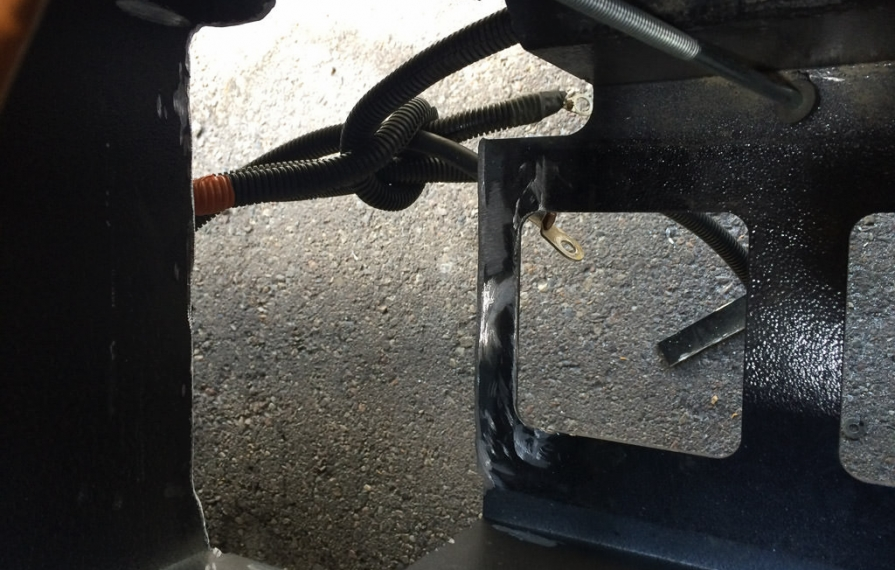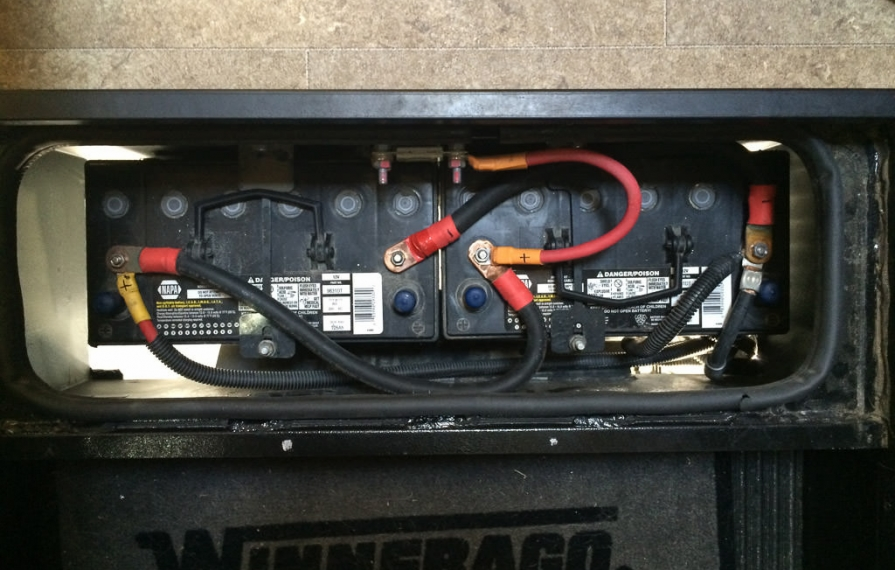
Upgrading RV Battery Capacity
Upgrading RV Battery Capacity
By: Peter & Kathy Holcombe
Almost 18 months ago, we boosted our solar generating power by adding two 160-watt panels to our factory installed Zamp Solar system. (You can learn more about how we installed the panels here.) Immediately there was a noticeable improvement in how quickly we were able to fully charge our house batteries, even in cloudy conditions. And during the day, our upgraded system easily met our regular energy demands. But once darkness descended, we were often forced to fire up the generator to augment our power supply, especially in the winter when our furnace was working overtime throughout the night. We decided that new batteries were in order to capitalize on the additional input we were receiving from the 420-watts of intake from our rooftop panels.
Battery options
When we started researching batteries, we realized there were endless possibilities and much debate about which type of battery is best for RVers. But there seems to be a consensus that a deep cycle battery is preferable, because it is designed for better long-term delivery and has a better capacity to withstand a greater number of discharge cycles. (As opposed to a starting battery that is designed to deliver quick bursts of power). The next decision was between flooded and AGM/gel batteries. Flooded batteries are less expensive, but require more maintenance, i.e., you have to check and refill the water levels periodically. AGM/gel batteries have a better discharge and recharge efficiency, and deliver the best life performance as long as they are recharged before they drop below 50% of their storage capacity. We opted to invest a little more for the maintenance-free AGM batteries for their additional performance, longevity and ease of use.

Our new group 31 deep cycle batteries compared to our stock group 27 batteries. You can see the difference in size, and therefore capacity.
Voltage
The big decision was choosing between 6 volt and 12 volt batteries, and there are two very divided camps as to which configuration is best. One option is four six-volt, deep-cycle golf cart batteries wired in series. Fans of this option claim that the golf cart batteries are designed for a slow, steady discharge (much like that in an RV) and are better able to withstand repeated discharge/recharge cycles. The second option is two 12-volt, deep-cycle batteries wired in parallel. Proponents of this camp claim that the two 12-volt batteries have the same amp hours and take up less space.
After reading endless articles and watching dozens of videos on the topic, we ultimately concluded that this debate is essentially "six of one, half dozen of another" when it comes to performance. However, when it came down to it there was a factor that made the decision easy for us ... space. The six-volt batteries take up quite a bit more area, and we wanted to continue to use our existing battery compartment under the stairs of our View. So, we opted for the 12-volt configuration and increased our capacity by upgrading to two group-31, deep-cycle batteries.
Installation
Even with the space-saving option, we still had to modify the battery compartment under the stairs to accommodate the larger 12-volt batteries. When we removed the stock batteries we realized that there are two tabs on the bottom of the battery compartment that keep the group 27 batteries from shifting during travel. We used a grinder to cut away the two vertical tabs that capped the ends of the old group 27 batteries.

After rounding out the sharp edges with the grinding wheel, Peter applied a liberal coating of under-body paint to the fresh cuts to prevent rust. The new batteries were a tight fit, and at first try, seemed too large for the space. However, with a little creative maneuvering, the larger batteries just barely slid into place and filled the entire compartment.

The group 31 batteries are a snug fit, but a welcome modification that practically eliminate the need for a generator for our day-to-day power needs.
Now having this added battery capacity, we (almost never) worry about power usage. This completely takes care of our needs on all but the most cloudy weeks. I think this is a very worthy upgrade for anyone who wants to cut the cord from the RV parks and stay in more out of the way scenic, private or economical locations.
Comments
Comments on this post are moderated, so they will not appear instantly. All relevant questions and helpful notes are welcome! If you have a service inquiry or question related to your RV, please reach out to the customer care team directly using the phone numbers or contact form on this page .